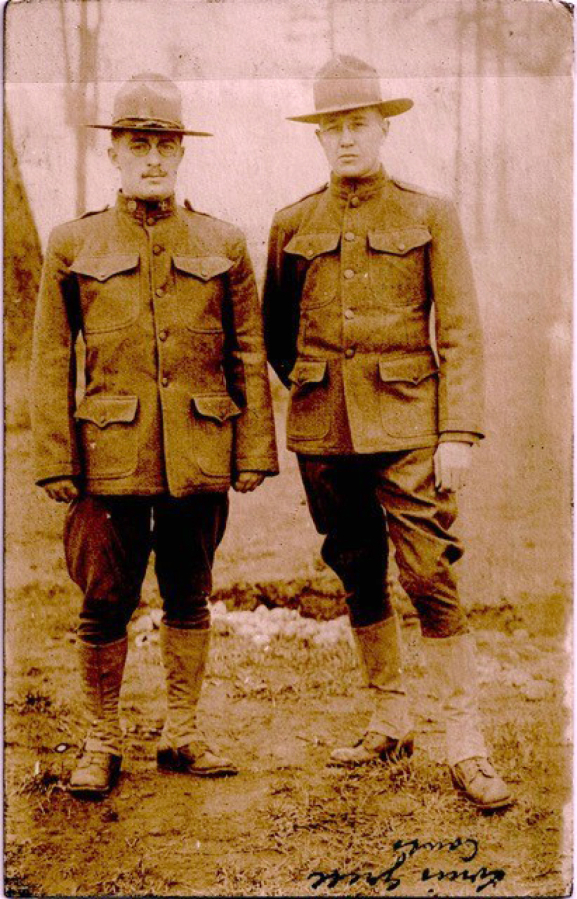His childhood in Iowa and youthful artistic training in Germany were no preparation for Louis Grell to labor as a soldier in the woods. Before World War I, he’d applied his artistry to a Mormon emigration mural for the 1907 Utah State Fair, then designed stage sets in New York and Chicago and taught at the Chicago Academy of Fine Arts. At first, during Vancouver’s Spruce Production Division duty, he endured a few weeks of Army training, including physical drills, infantry skills, aircraft schooling, sanitation and topography education and learning the general and special orders of guard duty.
All this was different for the new recruit. Now a trained soldier, Grell was living among hundreds of men in a tent town while the Spruce Production Plant planed lumber around the clock. The bustle and noise everywhere diverged from what he was used to, the quiet artist’s studio. In a 1918 postcard to his sister Helen, he mentions he wasn’t a “great friend” of Army life and hoped the “war will be over.”
Grell never saw a logging camp in the woods. The Nov. 11 armistice halted the demand for spruce-ribbed airplanes. Spruce logging and production stopped. The Army suddenly flipped the barracks into a demobilization camp. Soldiers needed to be discharged or deployed elsewhere. Grell found himself reassigned to the staff of Straight Grain, the Spruce Division weekly tabloid.
Straight Grain billed itself as “published by, for and about the soldiers” of the division and its contents support that claim. The first edition appeared on Oct. 26, 1918. The masthead declared Chaplain F.V. Hoag editor and noted competition for three open editorial positions. The qualities sought: writing ability and eagerness for a regimental paper. Pvt. Leon Bereth headed the art department, and each squadron had a reporter assigned. Local business ads hawked cigars, jewelry, eateries and olive drab wool uniforms.



